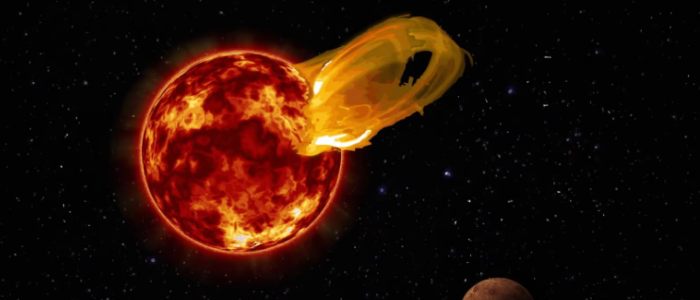As inhabitants of the Earth, we have become so accustomed to our sun that it’s hard to think of planets that rely on anything other than the sun. But the sun is just one of many stars—our galaxy alone has billions of them! This diversity paves the way for the perspective of exoplanets, referring to planets that are not in our solar system. The Proxima Centauri is one such star.

The Truth About the Starry Fascination
While there may be trillions of stars in the universe, each has a set of attributes that makes it unique. So, what makes the Proxima Centauri such a focal point?
Proximity
This star averages 4.25 light years from our sun. Researchers have thus been pointing to this proximity as proof that its orbiting planets might have the characteristics required to support human life.
Appearance
Since this star has an 11.13 apparent magnitude, viewing it with the naked eye proves challenging. However, researchers have been able to prove that this red dwarf star is a twelfth of the sun’s mass and a fourteenth of the sun’s radius. As such, it is much smaller than the sun.
Stellar flares
Magnetic activity in this star is known to cause intense stellar flares that have pushed researchers to question the sustainability of life on its orbiting planets. However, if the planets can prove to have strong magnetic fields and suitable atmospheres, these flares should not pose much of a challenge.
Its planets
Research into this planetary system is still in the early phases. But already, researchers have pointed out Proxima b as one of the key potentials for habitability in future generations. Other planets have also been covered, including Proxima c.
Research into this star began in 1915 and is thus still in the developmental stages. However, what researchers have uncovered has already shed light on what the future could hold for various life forms.
Is It Apples and Oranges
The proximity of Proxima Centauri to the sun has sparked various discussions regarding their similarities. Are they similar, and if so, what does this mean when it comes to life on its orbiting planets? Let’s compare the two:
Sizing
The sun is much bigger than Proxima Centauri. For context, the latter star measures a twelfth of the sun’s size and occupies a fourteenth of the sun’s radius.
Brightness and Temperatures
The sun is much hotter than Proxima Centauri, averaging 5,778 Kelvins, while the latter has a surface temperature of about 3,100 Kelvins. Moreover, they vary in brightness, with the sun proving to be more luminous.
Stellar flares
Research shows that stars that emit intense stellar flares can affect life on neighboring planets by producing X-ray emissions. Proxima Centauri is known for its intense flares, which have prompted research on whether its planets can withstand these flares without affecting existing life forms.
Emissions
The sun is much bigger than Proxima Centauri. However, they both produce similar amounts of X-ray emissions, which points to the intense stellar flares on the latter planet. As such, the sun has comparably fewer emissions in the long term.
Starspots
Both stars have regular starspot cycles.
It’s also important to note that these stars vary in their categorization. The sun is a G-type star – such stars are known for their large sizes, high temperatures, and higher-than-average luminosity. The Proxima Centauri is an M-type red dwarf star – these are known for their small sizes, cool surface temperatures, and low luminosity.
Can Its Planets Support Human Life

Researchers are eagerly looking into whether red dwarf stars can provide habitable conditions for human beings and other forms of life. But can they? Let’s look at some of their key features:
- Longevity: These stars can last up to hundreds of billions of years, thus offering energy to planets for multiple lifetimes. Moreover, they make up more than two-thirds of the stars in the Milky Way. As such, they have a much higher chance of sustaining life forms than other types.
- Proximity. Orbiting planets are often much nearer these types of stars than other types. Therefore, maintaining habitable surface temperatures becomes easier as the planets will be close to the warmth – this paves the way for the maintenance of liquid water, which is important for all life forms.
These factors have prompted researchers to look into the possibility of life on their orbiting planets. In the case of Proxima Centauri, the focus has been on Proxima b, which poses the following challenges.
- A high risk of radiation. The intense stellar flares from this star pose a high risk of radiation that can adversely affect life on the nearby planets. However, if researchers can prove that the planet has an atmosphere and a magnetic field that can protect it from these flares, life forms can survive.
- Extreme temperatures. Preliminary research shows that Proxima b has one side that always faces the star while the other always faces the other side. This orientation means that one side experiences extremely high temperatures while the other experiences extremely low temperatures. However, findings show that the mid-section experiences a balance in temperatures that could promote a habitable environment.
- Magnetosphere strength. Planets rely on magnetic fields in their cores to help them remain stable in the wake of stellar flares and radiation. But with red dwarf stars, orbiting planets often fall short in this regard, thus exposing the planets to significant destruction. What’s more, it also exposes these planets to the loss of their atmospheres, further putting their sustainability at risk.
Since orbiting planets differ in their positioning and physical properties, some may offer more sustainability than others, as has been the case with Proxima b, which now stands as a strong contender.
Conclusion
Is Proxima Centauri the answer researchers have been looking for in their quest to find habitable planets? This star is quite similar to the sun, though it shows variations in its surface temperature, size, stellar flares, and luminosity. Despite these differences, the star has proven to have the potential to support life on its orbiting planets, with Proxima b proving to be a viable potential for habitability in the generations to come.
